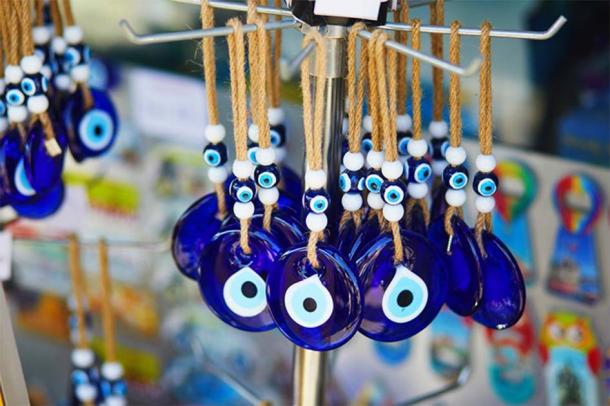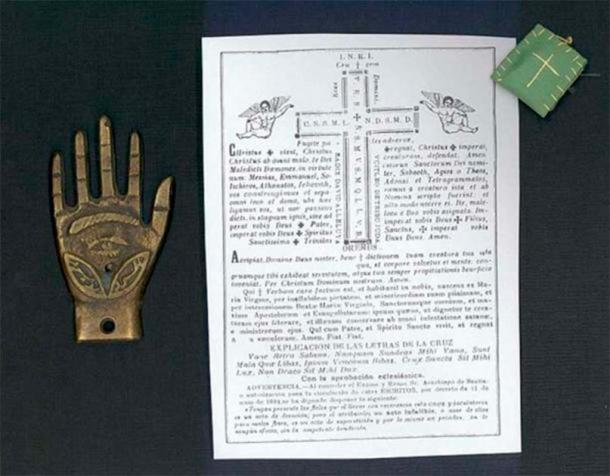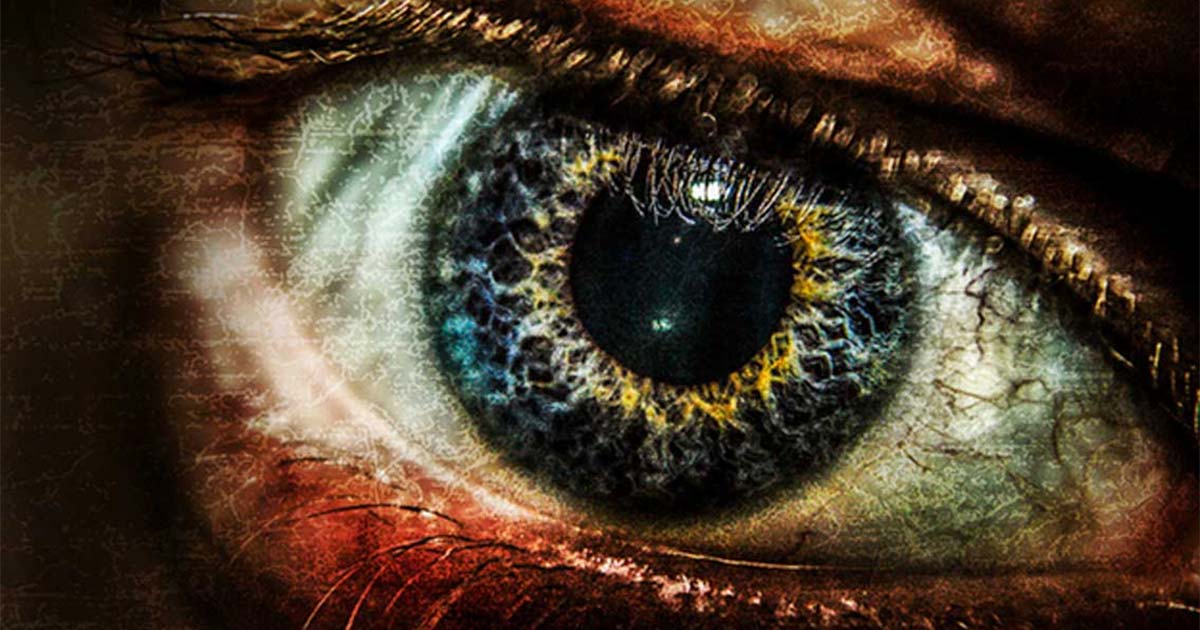Warding Off the Evil Eye: Ancient Rings and Phallic Talismans
For thousands of years, people have been plagued by the haunting belief that envious or disdainful gazes could bring them harm, injury, bad luck or even death. In response, various cultures have created jewelry and other talismans to protect themselves from the negative effects of what has come to be known as the evil eye.
Ancient Evidence of Belief in the Evil Eye
One such ancient artifact was discovered in Croatia. An eye-catching ring dating back to the 3rd century, this particular ring depicts either a rabbit or a mouse nibbling a flower (believed to be a sign of happiness) and an eye above the scene—a symbol meant to protect the wearer from misfortune. It was one of about 200 artifacts found in Vinkovci, a town in Croatia that predates Roman occupation.
- Lustrous Gems As Amulets And Talismans Of Ancient History
- Evil Eye Box and Other Treasures Found in Ancient Tombs on the Shores of the Nile
One of the oldest known texts mentioning the evil eye is a clay tablet inscribed with prayers used to ward off its effects. It was created by the Sumerians around 3000 BC. A similar prayer is still in use amongst many cultures around the world.
However, the concept of an evil eye may predate the written word. Many researchers suggest that 10,000-year-old drawings found on cave walls in Spain also depict symbols that were meant to defend individuals from the evil eye.

Ruby eye pendant from an ancient civilization in Mesopotamia. Adilnor Collection. (Danieliness / CC BY SA 3.0)
The Evil Eye as a Worldwide Phenomenon
Belief in the evil eye is a worldwide phenomenon, which transcends geographical boundaries. In the Middle East, the concept of the evil eye, known as nazar in Turkish, ain in Arabic or cheshm in Persian, holds immense importance. For thousands of years, the evil eye has been blamed for a plethora of ailments, from sickness to marital strife. Those attracting envy, including the wealthy or beautiful, have historically been thought to be most vulnerable to its effects.
Across East and West Africa, the belief in the evil eye is also deeply rooted. Among the Yoruba people of Nigeria, for instance, ajuju is considered a harmful gaze caused by envy that can bring misfortune.
Cultural constructions surrounding the evil eye have also been found in the history of Central America, South Asia, Central Asia and Europe—especially in the Mediterranean region. The Italian folklore refers to it as malocchio, while the Greek belief in the evil eye, called mati, centers on a protective amulet, often a blue eye symbol, to ward off harm from envious or malicious gazes.
Ideas surround the concept of the evil eye also spread to Celtic regions of northern Europe, where Sìthichean or sea fairies were thought to cast malevolent gazes or curses upon individuals and their livestock, causing harm or misfortune. These beliefs reached the Americas via European colonists and Middle Eastern immigrants.

A collection of Nazar amulets on display in Turkey, used to protect against the evil eye. (Ekaterina Pokrovsky / Adobe Stock)
Talismans and Protective Measures Used to Ward off the Evil Eye
Numerous talismans have been created to ward off the curse of the evil eye. In many cultures, they are disks or balls with concentric blue and white circles, a blue or green eye on a hand, or other items which represent an eye. Evidence of eye-shaped beads made of blue glass, popularly known as nazar, has been traced back as far as the 16th-century BC in and around the Mediterranean. They were and are thought to be able to absorb any negativity caused by envious evil eyes. Meanwhile, the Hand of Fatima is another popular talisman, named after the daughter of the Prophet Muhammad.
Despite the widespread popularity of amulets in the Islamic world, many Muslims strongly oppose their use due to the belief that only God can safeguard against evil spirits. Their defense against the evil eye is rooted in prayers and Quranic verses. Commonly used are Surah al-Falaq and Surah an-Nas, known as “the verses of refuge,” invoking God's protection. Islamic tradition shares anecdotes of the Quran's effectiveness, such as the story included by Ibn Qayyim al-Jawziyya about a Bedouin healing his camel through reciting verses, illustrating the power of faith.

Amulets against the evil eye from de Basque Museum of History of Science and Medicine. (Museomed / CC BY SA 3.0)
Within the Middle East, Bedouins also use incense as a measure against the evil eye, particularly burning agarwood or incense to clean negative energy after someone has been cursed. In Iran, the practice of burning esfand seeds until they pop in order to clean away negative energy is thought to date back to the time of Zoroastrianism which lasted from about the 6th century BC until the 7th century AD.
Other protective measures have also been taken against the evil eye across cultures and time: blackening the face, especially near the eyes (for some Asian children) and eating alone or only with immediate family members (some Asian and African people believe their souls are especially defenseless while their mouths are open). “Ancient Egyptians used kohl as a black rim around the eyes to protect against evil spirits entering the windows to the soul,” claimed Middle East Eye in an article about ways people in the Middle East ward of the evil eye.
- Ancient Egyptian Eye Makeup Doubled As Germ Protector But Was Poisonous
- The Evil Eye in the Mediterranean: How to Avert Accidental Envy
Some cultures believe it is important to consume certain foods, use specific hand gestures, wear sacred texts, or display particular ritual drawings or objects for protection against the evil eye as well. In Roman times, the bearing of a large phallus image around one’s neck was also thought to protect from this type of curse—believing it would draw the evil eye’s attention to the object rather than the wearer!
While medical science asserts that the evil eye cannot cause fatalities, centuries of deaths have been attributed to its curse. In medieval Europe, individuals deemed witches were frequently accused and executed due to their supposed ability to inflict harm with malevolent gazes. The British court's apprehension of the evil eye's influence was such that accused witches were compelled to enter courtrooms walking backward.
Top image: Various cultures have created jewelry and other talismans to protect themselves from the negative effects of what has come to be known as the evil eye. Source: Dennis Skley / CC BY ND 2.0

















